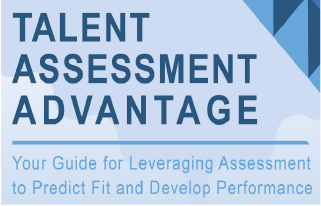It used to be that having the Best Places To Work award or being a marquis brand on the Fortune 500 list was enough to attract and retain top talent. Those days are gone.
Today, top talent (or frankly anyone) are looking for opportunities to grow.
Employees want meaningful challenges in what they do, and to be part of organizations that go beyond solely maximizing stockholder value to authentically work towards what is right for all stakeholders.
The Best Places To Work of the future will provide coaching, talent development, and career pathing at all levels, not just at the senior levels. This democratization of talent development will strengthen the entire organization.
We have seen this play out in companies of all sizes - no amount of senior executive leadership coaching will help an organization that has massive churn due to employees seeing their job opportunities and career growth as being nonexistent.
While people are still going to leave to make more money, many will stay if they see that they have a promising future.
The unforced error that smart HR leaders want to avoid is - high-quality who leave because they were not aware of the internal opportunities at the company. This error is costly – increased recruiting and onboarding costs and a loss of the training dollars invested.
The smartest talent acquisition strategy today is to increase retention and engagement. The total dollars invested in developing your people will be less than the money spent hiring and onboarding new employees.
How do you create your own Best Places To Work workplace where people can grow?
Coaching helps all of us grow. A smart coach will be able to ask the right questions to help you discover the answers you need to improve. I believe that coaching works best when an outside resource provides it. An external coach will have objectivity and detachment that will help them
Historically, only senior executives received coaching. Coaching was expensive and could only be justified for the top people in the organization. Today, more affordable solutions are available that combine virtual, in-person, and micro-learnings. Now coaching can move down the organizational ladder to managers and key individual contributors.
Have a learning management system that provides real talent development is also essential. It is not enough to provide basic instructions on generic content (for example: how to improve your EQ). Today’s employees are looking for course content that will help them grow professionally and personally.
LinkedIn Learning is a perfect example of how to structure course content around business, creative, and technology learning. Their on-demand library is content-rich, accessible 24/7, and provides relevant education.
Finally, the future Best Places to Work will provide career pathing guidance to show how their employees can professionally grow within their organization. Retention is easier when employees can see what future opportunities are available and what steps they need to take to be ready for their next step.
Career progression has become more interesting now that many firms operate in a matrixed or team environment. I believe that these changes have helped to increase the number of career opportunities. Instead of following the traditional silo progression within your functional area, employees can now set their sites on a broader set of possibilities.
Best Places To Work awards very often focus on the benefits and perks provided. These are important. What will have a more lasting impact on attraction and retention will be what career development and learning opportunities a company offers.
I prefer a “Come Grow With Us” message rather than a “Come Enjoy Our Ping-Pong Tables and Kombucha” recruiting pitch.





